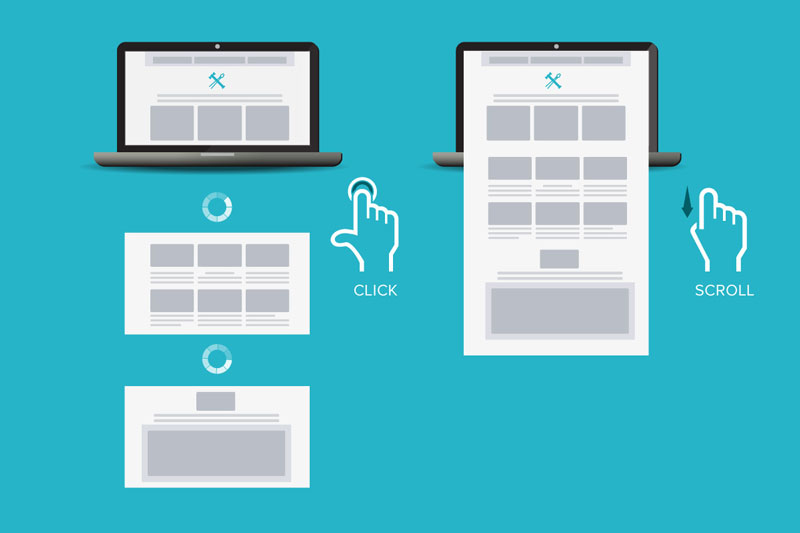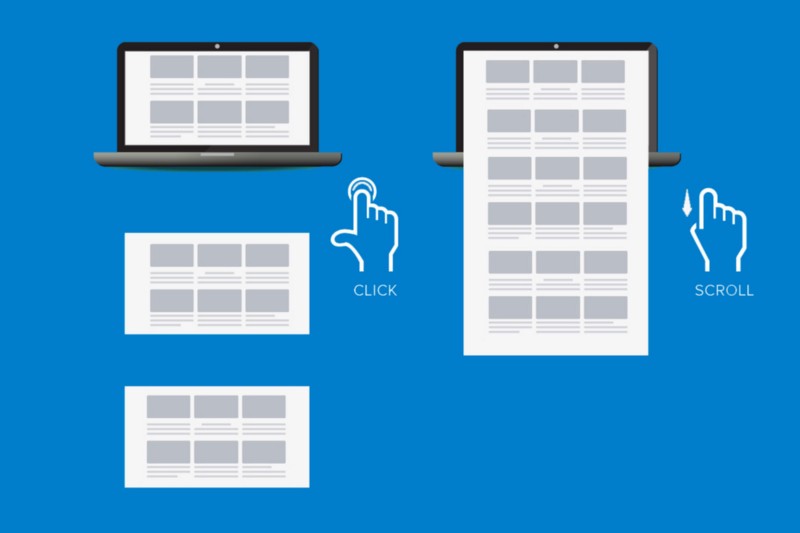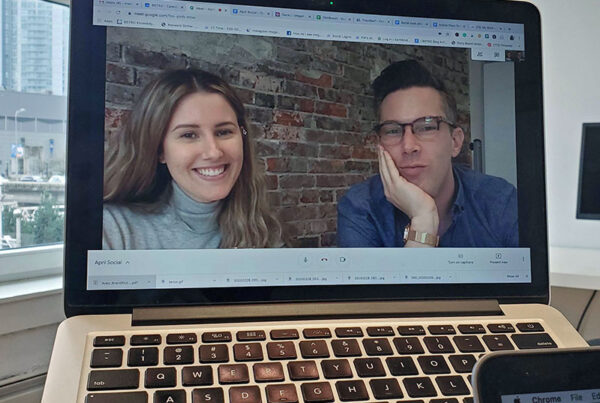I must be doing something right. Right?!
I’ve heard about it, we learned about it in university: Plagiarism. I thought it was for the Stefan Sagmeister’s and Paula Scher’s of the design world. But, it happened to my work!
I designed graphics for a blog article last year, and a few weeks ago another article was shared with me that contained very similar graphic. It was a recently published on an unrelated UX blog: UX Planet.

Read the original article: Scrolling vs Clicking – What’s the Preferred User Experience.
I was shocked. Then mad. Then I felt flattered in a way and, if I’m honest, a little excited. I thought for a while if I should be mad about it.
But mostly I was disappointed. This is someone who works in the creative field producing content, much like me. Except instead of words like them (and software as their Twitter profile claims), I create graphics, visuals, layouts and designs. I thought they would have an understanding that it isn’t okay to take someone else’s hard work and claim it as their own.
Taking inspiration from the graphic is one thing. But stealing it is another. I contacted Nick Babich, publisher of the article, about the graphic – mentioning that being asked for permission first, or at least including an attribution, would have been nice.
My email didn’t seem to be received well, but the graphic was removed immediately (now replaced with another).

To Plagiarise, as defined by the Merriam-Webster Dictionary means:
- to steal and pass off (the ideas or words of another) as one’s own
- to use (another’s production) without crediting the source
- to commit literary theft
- to present as new and original an idea or product derived from an existing source
Mr Babich knew exactly what he was doing. He had spent time to remove any trace of Forge and Smith branding, and then posted it as his own. Plagiarism. As soon as I asked about it, it was removed. Oddly enough, other images in the article had the source attributed to them (including the replacement now in the article) – but not mine.
Full disclosure: I can’t claim this image completely as my own. I put together several (licensed) stock illustrations to create the graphic. The concept, arrangement and final creation was done by me.
Here are some stock images I used:

And the final image Forge and Smith published:

This is the image UX Planet originally posted:

Note that the Forge and Smith icon has been removed, the spinning load graphic gone and the layouts are all duplicates of the same squares… Mine was better.
What did I learn from being plagiarised?
Imitation is the best form of flattery. But plagiarism sucks. I felt this went beyond imitation into stealing. If someone is copying my graphics – then I must be doing alright work. And this isn’t just anyone, this is a professional with a high profile blog. It was found because someone thought the article worth sharing with a UX designer, who passed it along to me – that’s an influential article!
Honoured to be included in the blog. Not honoured to be plagiarised. I would have been overjoyed had I just been asked (the final call to allow use of the image would have fallen with Forge and Smith of course).
If you’re looking for images for your blog – search in the right places, get to know copyright, or at least ask for permission. Alternatively, I know a designer who does some awesome graphics (wink wink). He even blogged about some tips for creating your own visuals: here and here.
If you’ve dealt with plagiarism before I’d love to hear from you. How would you have handled this situation? Start a conversation on Twitter: @damianjo #plagiarism



